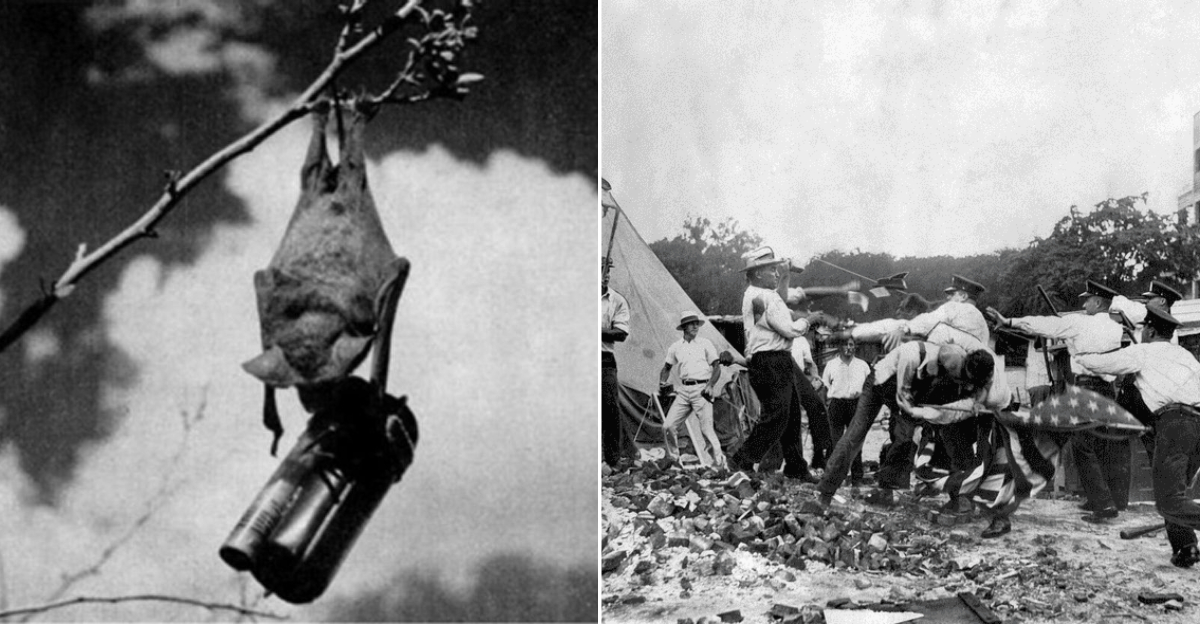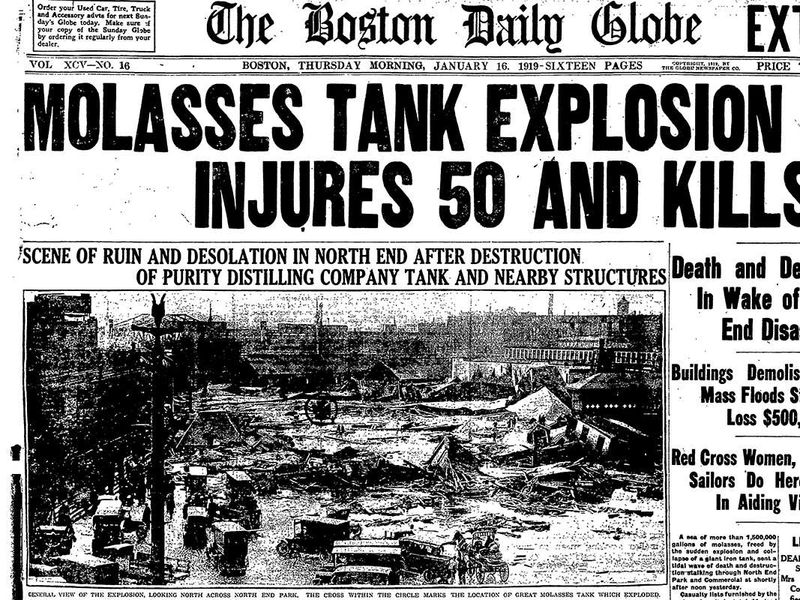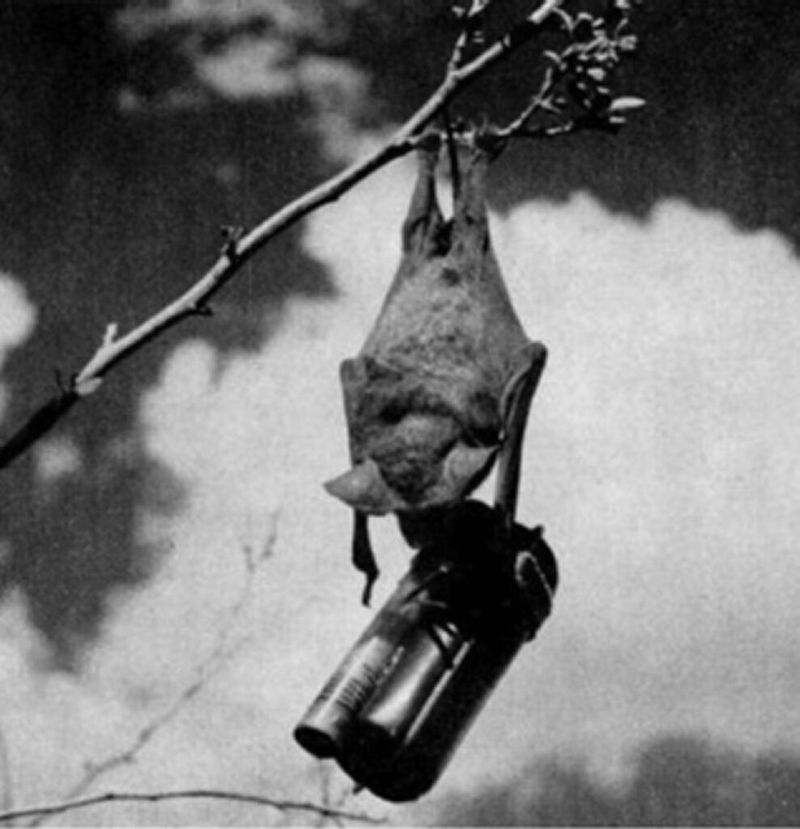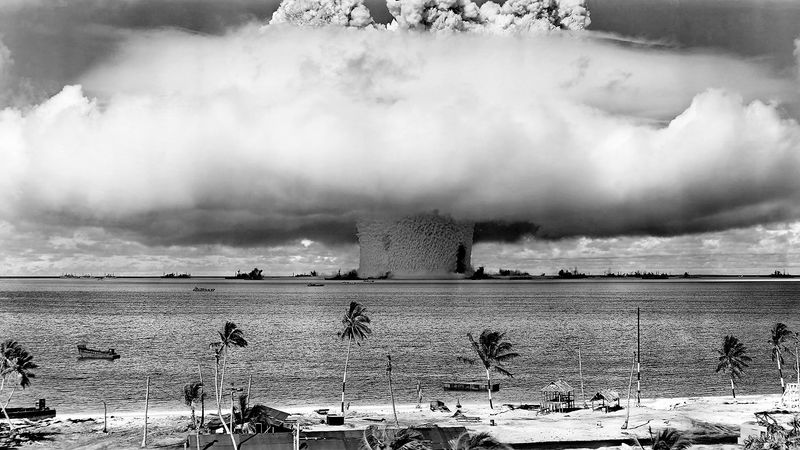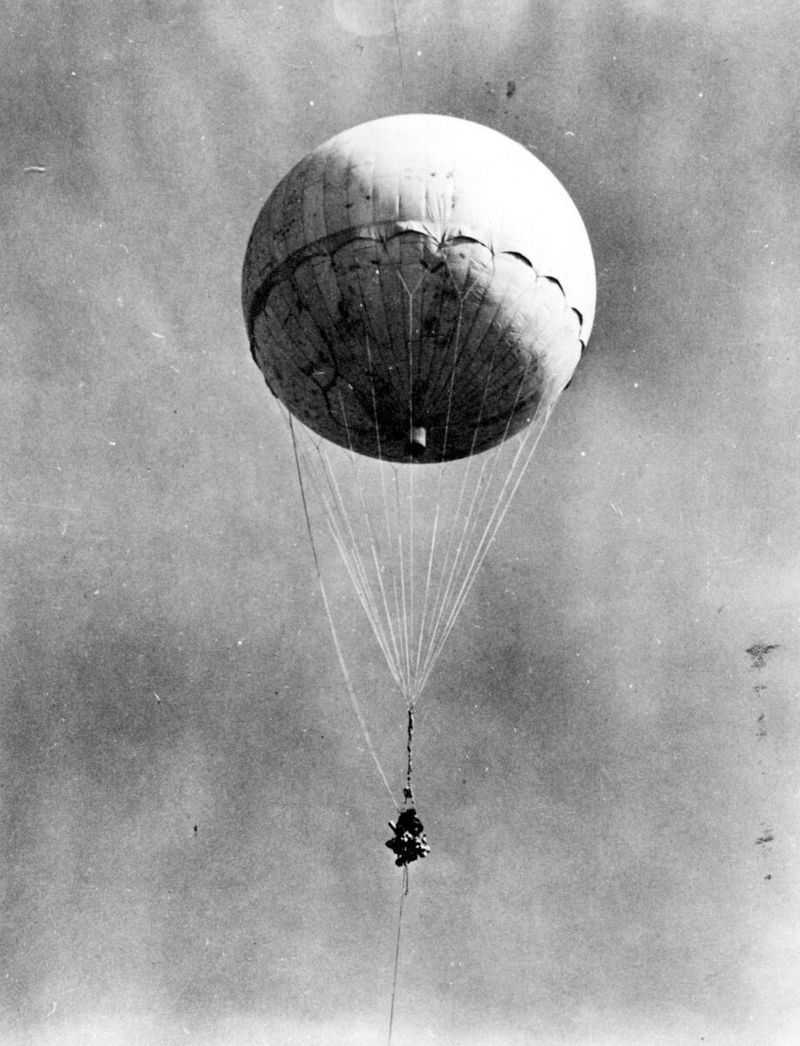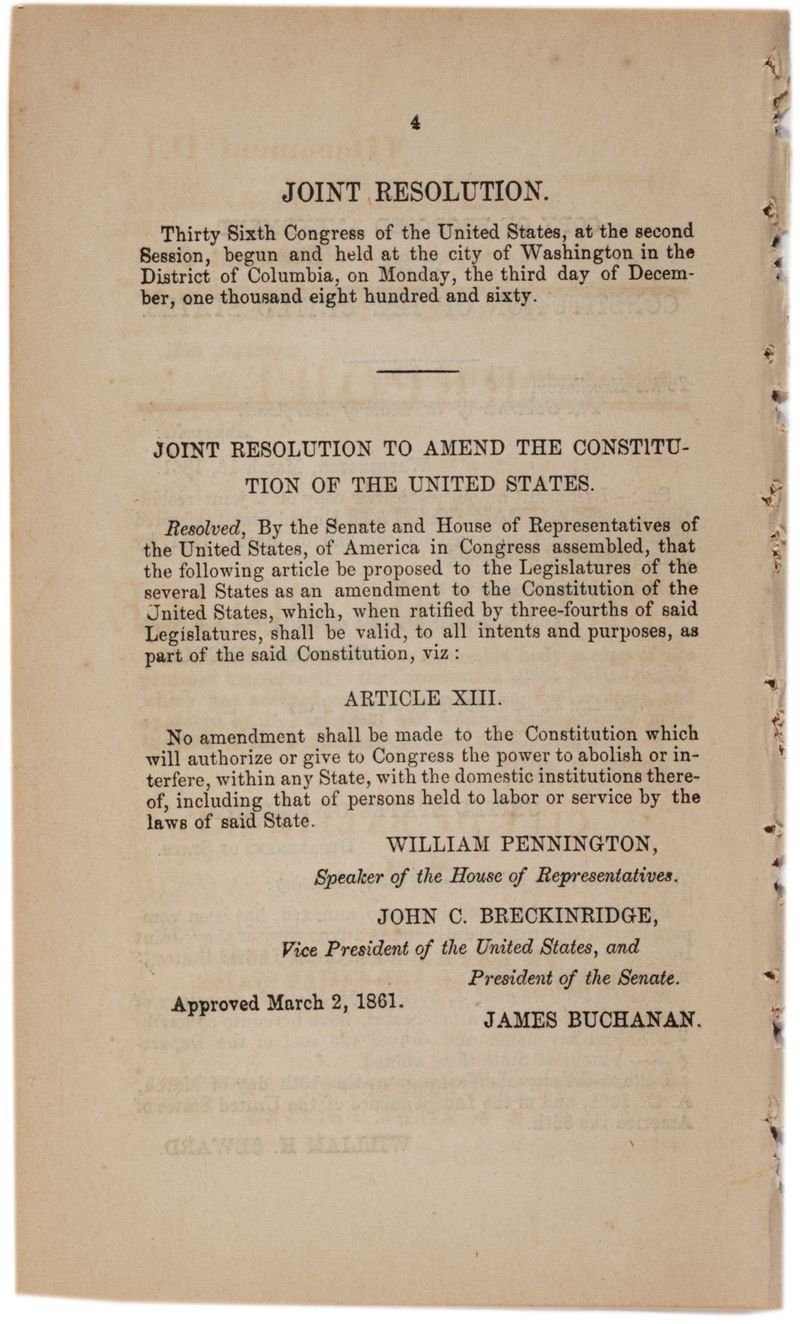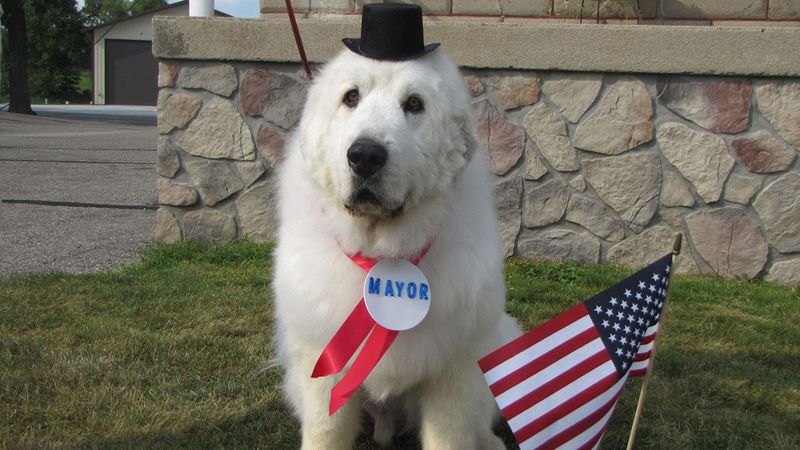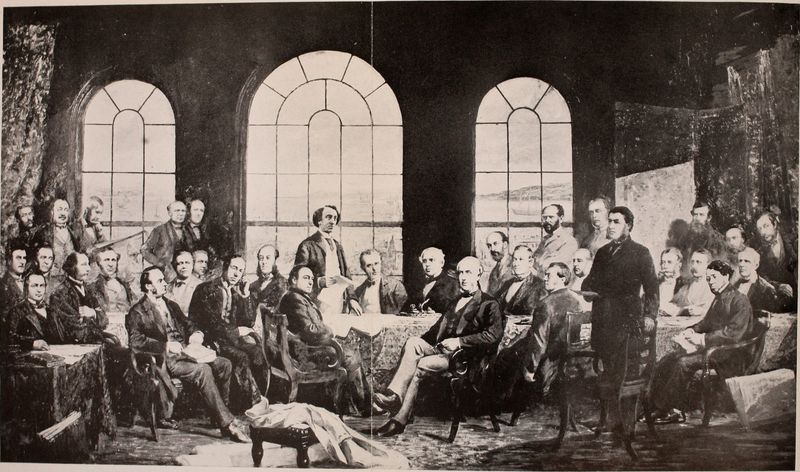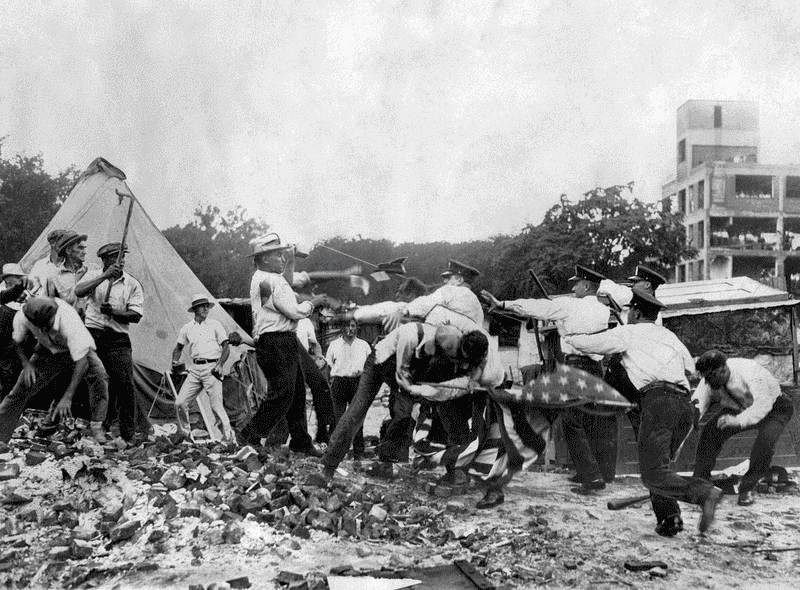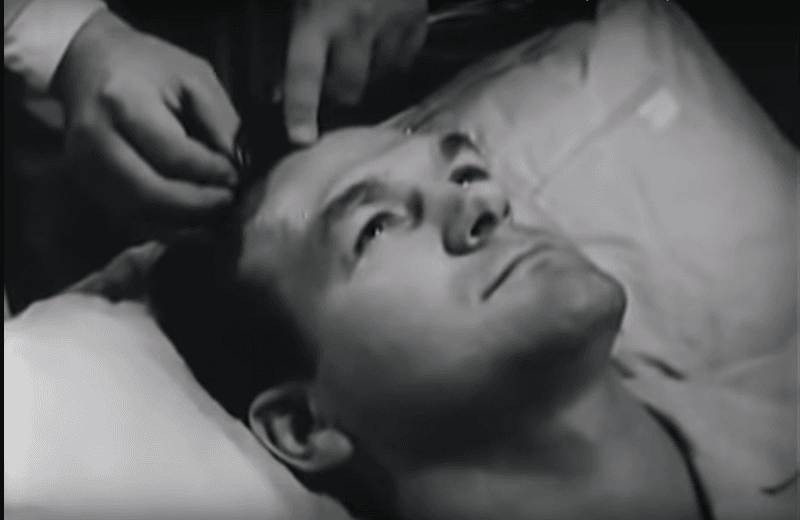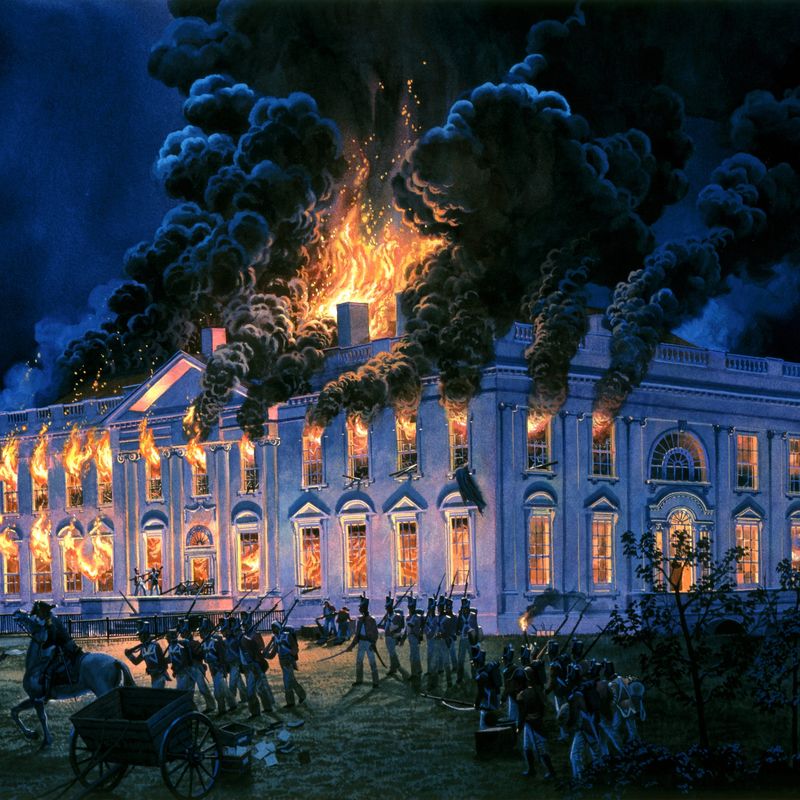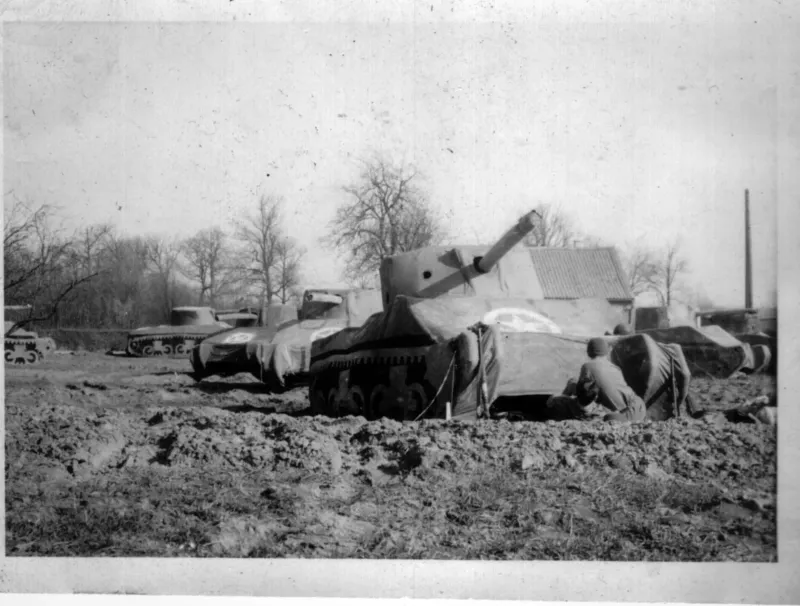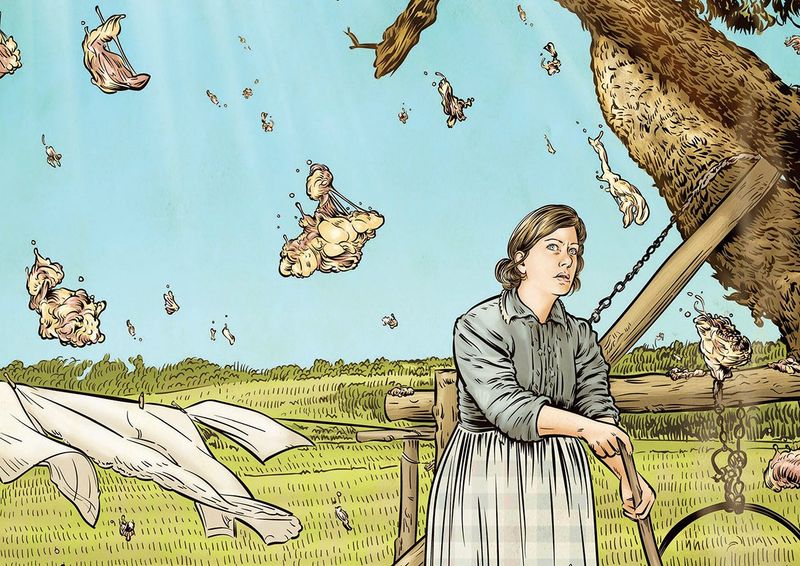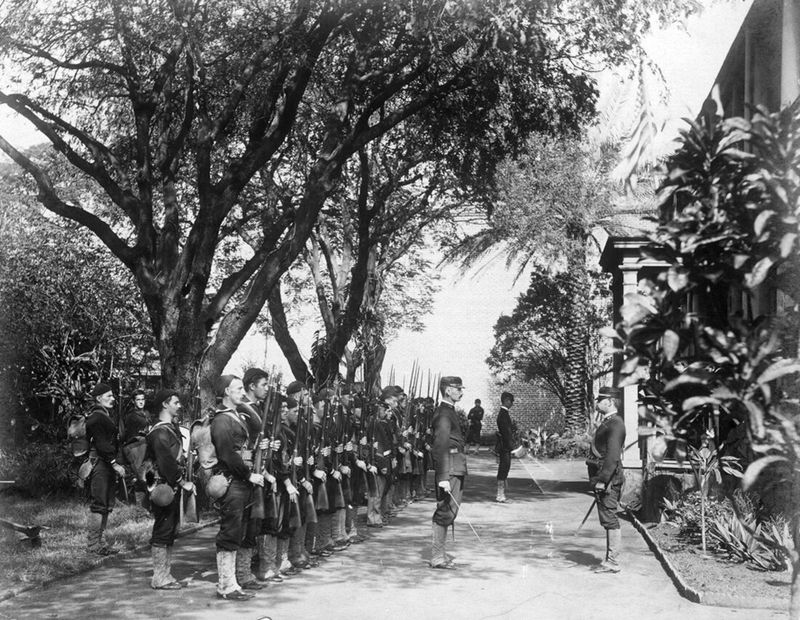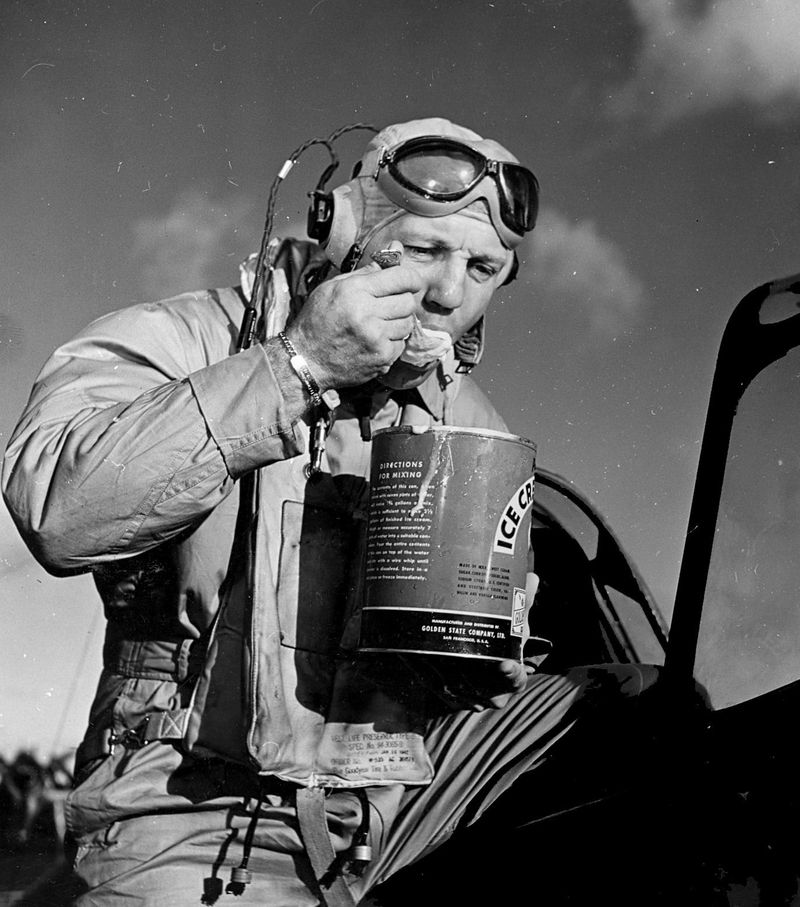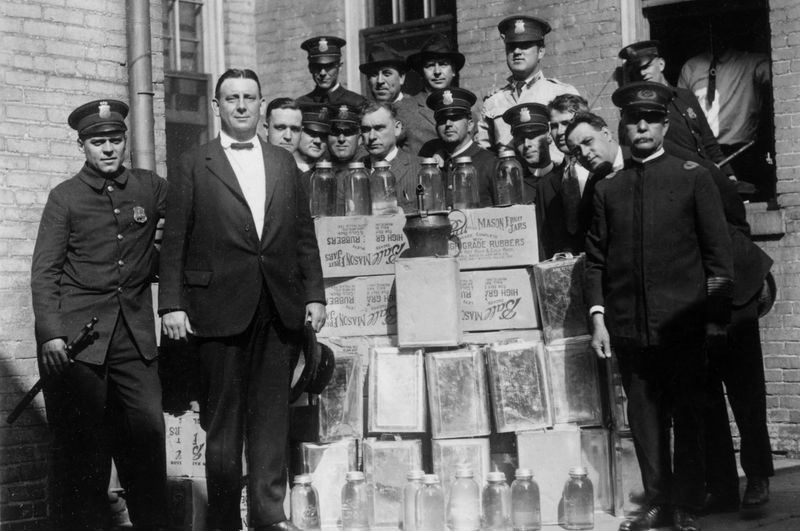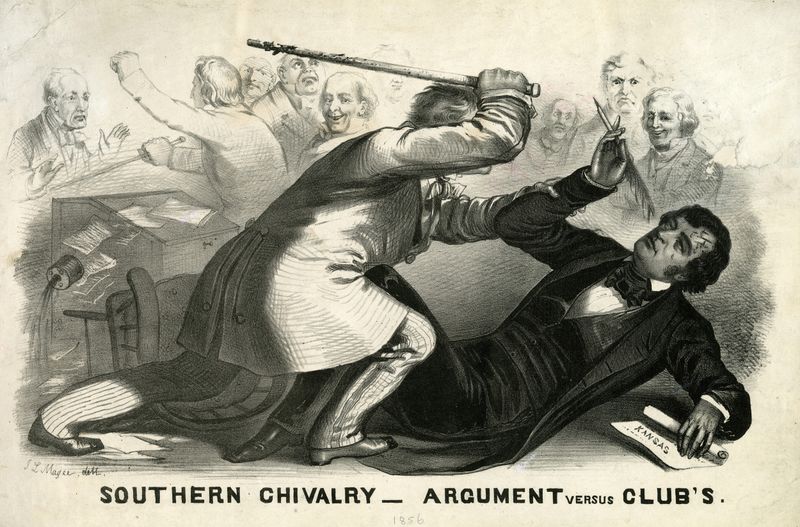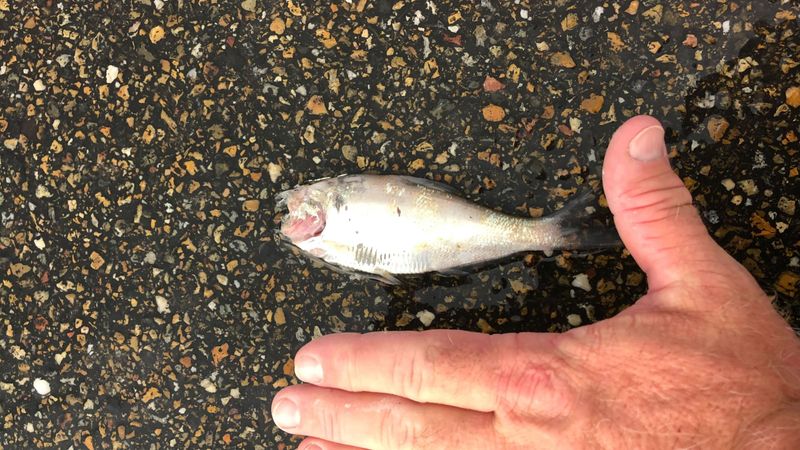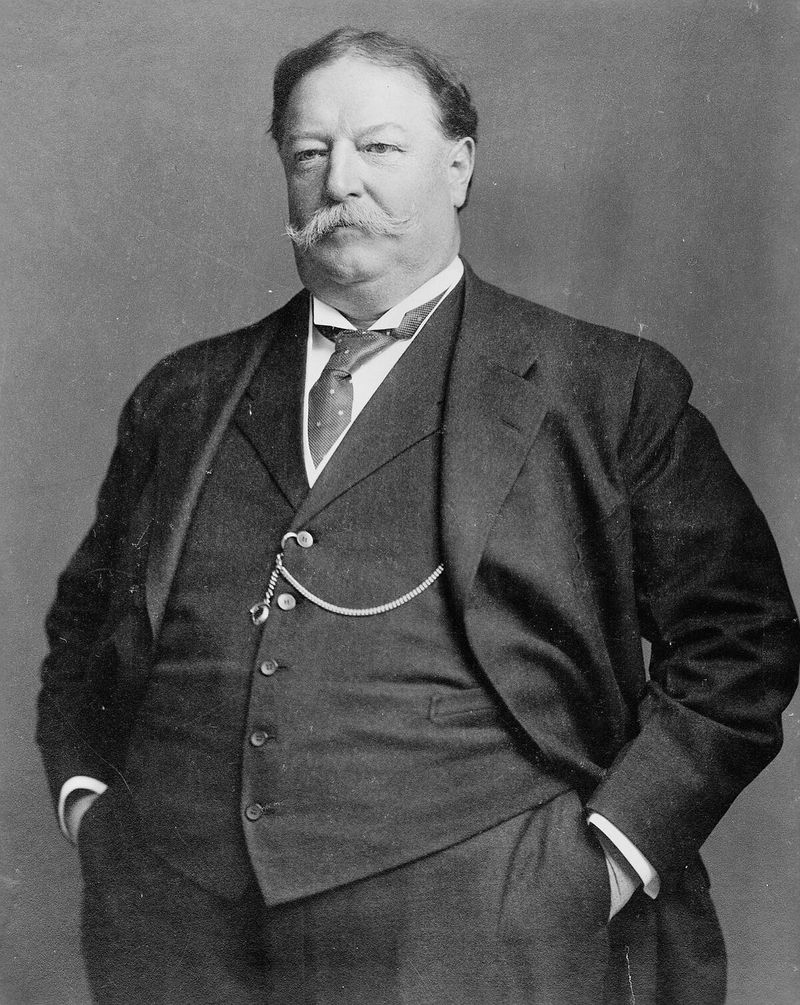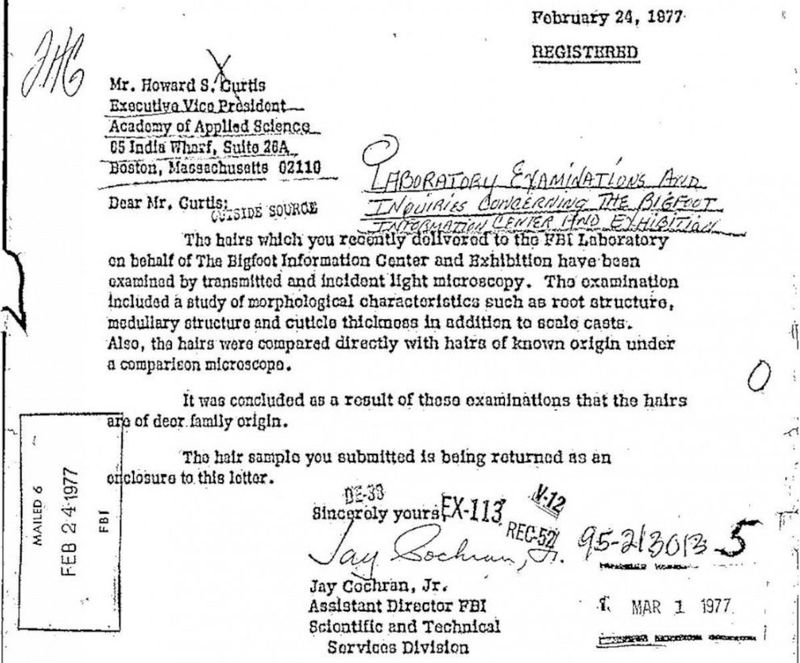Prepare to be amazed by some of the most bizarre and unbelievable events that have taken place in U.S. history. From natural disasters to governmental oddities and strange military plans, these stories are both fascinating and incredulous. Explore 22 such events that you might have trouble believing actually happened in the United States.
1. The Great Molasses Flood (1919)
In 1919, Boston experienced one of the most unusual disasters in American history: the Great Molasses Flood. A storage tank burst, releasing over two million gallons of molasses into the streets. The viscous wave, moving at 35 miles per hour, caused significant damage and chaos.
Buildings were destroyed, and roads were made impassable. Emergency responders faced immense challenges as they navigated the sticky deluge. Tragically, 21 people lost their lives, and many more were injured. The cleanup took months, and the smell of molasses lingered for years. This bizarre event is still remembered for its tragic and unusual nature.
2. The U.S. Once Planned to Drop Bat Bombs (1940s)
During World War II, the United States devised a peculiar plan to attack Japan using bat bombs. The concept involved releasing bats carrying tiny incendiary bombs over Japanese cities. These bats would roost in wooden structures, causing fires upon detonation.
Though it sounds like a plot from a comic book, the military took this idea seriously and conducted tests. Despite initial enthusiasm, the project was eventually shelved in favor of more conventional weaponry.
This strange chapter in military history highlights the desperate and creative efforts explored during wartime. The bat bombs, however, never saw action in the field.
3. The Time the U.S. “Lost” Nuclear Bombs (Various Incidents)
Losing nuclear bombs might sound impossible, but the U.S. has experienced several such incidents. Known as “Broken Arrows,” these events involved misplaced or accidentally dropped nuclear weapons.
Some bombs were recovered, yet others remain lost, hidden at sea or buried under land. The potential dangers of these missing armaments have prompted extensive searches, as their recovery poses significant safety concerns.
Despite technological advances, these missing bombs still trouble experts today. Ensuring their recovery and preventing future mishaps remain crucial tasks for military and governmental agencies.
4. The Deadly Balloon Bombs of World War II (1944-1945)
In a lesser-known WWII episode, Japan launched thousands of balloon bombs aimed at North America. These balloons, filled with explosives, traveled across the Pacific Ocean, carried by wind currents.
Their intent was to cause chaos and fires within the U.S. mainland. While most failed to reach their targets, a few succeeded, tragically killing six Americans in Oregon.
The balloon bombs represent a unique, if unsuccessful, method of warfare. Their limited impact didn’t alter the war’s course, but they remain a testament to the innovative and desperate tactics employed during the conflict.
5. Congress Once Proposed a 13th Amendment That Would Have Kept Slavery (1861)
In 1861, as tensions over slavery reached a boiling point, Congress proposed a 13th Amendment that would have protected the institution of slavery. Known as the Corwin Amendment, it sought to prevent federal interference with slavery where it existed.
Had it been ratified, the amendment might have altered U.S. history significantly. However, the Civil War erupted, and President Lincoln’s Emancipation Proclamation shifted the nation’s trajectory.
The Corwin Amendment serves as a reminder of the volatile debates surrounding slavery and the complex journey toward equality. It was ultimately overshadowed by the adoption of the current 13th Amendment, which abolished slavery.
6. A Town Elected a Dog as Mayor—Multiple Times
Believe it or not, some American towns have elected dogs as their mayors. Rabbit Hash, Kentucky, is a notable example where dogs have held the honorary title multiple times.
These elections are often fundraising events, bringing communities together in support of local causes. While the canine mayors have no political power, they symbolize community spirit and humor.
These whimsical elections highlight small-town charm and creativity, reflecting a sense of lightheartedness in local governance. The tradition continues to draw attention, making these towns famous for their unique mayoral choices.
7. The U.S. Accidentally Invaded Canada (1850s & 1970)
On more than one occasion, the United States has accidentally invaded Canada. In the 1850s, a border dispute led American troops to mistakenly cross into Canadian territory.
Another incident occurred in 1970, during a military exercise when U.S. forces accidentally entered Canada. These peaceful invasions were resolved diplomatically, without escalating tensions.
Although these events could have led to serious international conflicts, they instead became anecdotes highlighting the importance of clear communication and understanding between neighboring countries. They serve as reminders of the delicate balance in international relations.
8. The Bonus Army Protest That Led to a Military Attack on U.S. Veterans (1932)
In 1932, thousands of World War I veterans, known as the Bonus Army, marched on Washington, D.C., seeking early payment of promised bonuses. Amidst the Great Depression, these veterans faced dire economic hardships.
However, their peaceful protest ended violently when the U.S. military was ordered to forcibly remove them. Led by General Douglas MacArthur, troops used cavalry and tear gas against the veterans.
The incident shocked the nation, highlighting the struggle of veterans and the government’s harsh response. It remains a controversial chapter in American history, illustrating the desperate times of the Depression era.
9. The CIA’s Secret Mind Control Experiments (1950s-1970s)
During the Cold War, the CIA embarked on a secretive project known as MK-Ultra, aiming to explore mind control techniques. Experiments included administering LSD and other drugs to unsuspecting citizens.
The goal was to develop methods for controlling human behavior, often without participants’ consent. These unethical practices led to severe psychological and physical harm for those involved.
The project’s exposure caused public outrage, leading to congressional investigations. MK-Ultra remains a dark chapter in U.S. intelligence history, serving as a cautionary tale about unchecked governmental power and ethical boundaries.
10. The Time the White House Was Burned Down (1814)
In 1814, during the War of 1812, British troops launched an attack on Washington, D.C., resulting in the burning of the White House. President James Madison and his wife fled, narrowly escaping harm.
The attack was a retaliatory measure for American actions in Canada. The iconic building was left in ruins, with only its exterior walls remaining.
The White House’s destruction was a symbolic blow to American morale, yet it spurred efforts to restore the capital. The building was rebuilt, symbolizing national resilience and determination.
11. The “Ghost Army” That Fooled the Nazis (1944-1945)
During World War II, the U.S. employed a unique deception tactic known as the “Ghost Army.” This unit used inflatable tanks, fake radio transmissions, and sound effects to mislead German forces.
Comprised of artists, actors, and designers, the Ghost Army was instrumental in successful operations, such as the D-Day landings.
By creating illusions of large troop movements, they diverted enemy attention from critical areas. This innovative approach saved countless lives, showcasing creativity and cunning in warfare. The Ghost Army’s efforts remained classified for decades, only recently gaining recognition for their contributions.
12. The Great Kentucky Meat Shower (1876)
In 1876, a bizarre phenomenon occurred in Bath County, Kentucky, where chunks of meat rained down from the sky over a large area. Witnesses described the pieces as beef-like and up to 3 inches in length. Scientists speculated various explanations, including regurgitation by vultures, but no definitive cause was ever proven.
This event puzzled locals and attracted national attention. Samples were sent for analysis, but conclusions remained inconclusive, adding to the mystery. Despite various theories, the Great Kentucky Meat Shower remains an unsolved enigma in meteorological history.
13. The 1970s Plan to Nuke Alaska for “Development”
In the 1970s, the U.S. government proposed a project to use nuclear explosions to create a harbor in Alaska. Known as Project Chariot, the plan aimed to demonstrate peaceful nuclear applications.
However, environmental concerns and public opposition halted the project. The potential ecological impact and indigenous community effects were significant factors in its cancellation.
Project Chariot remains a controversial example of nuclear technology’s dual-use potential. It highlights the importance of environmental awareness and public engagement in scientific endeavors.
14. The Time the U.S. Declared War on the Kingdom of Hawaii—By Accident (1893)
In 1893, U.S. troops inadvertently played a role in the overthrow of the Hawaiian monarchy. Mistakenly believing they acted under official orders, they assisted local insurgents.
This unintentional intervention led to the establishment of a provisional government, eventually paving the way for Hawaii’s annexation by the United States.
The incident underscores the complexities of foreign interventions and their long-lasting implications. It stands as a pivotal moment in Hawaiian history, reflecting the intricate dynamics of U.S. expansionism.
15. The U.S. Once Tried to Ban Ice Cream (1942)
During World War II, ice cream became a symbol of American comfort, but its production was curtailed to conserve dairy for soldiers. The military sought to boost troop morale by providing ice cream at the front.
This wartime measure led to public disappointment, as ice cream vanished from stores. While not a full ban, the restrictions highlighted the sacrifices made on the home front.
The rationing was short-lived, and ice cream soon returned to American tables, symbolizing post-war prosperity. This temporary measure remains a curious footnote in the nation’s wartime history.
16. The Time a Dead Man Won a Senate Seat (2000)
In a political twist, Missouri’s Mel Carnahan won a Senate seat in 2000, weeks after dying in a plane crash. Voters chose him over the incumbent, motivated by loyalty and discontent with the alternative.
Carnahan’s widow was appointed to serve in his stead, honoring his campaign’s promises. This unusual outcome sparked debates over election laws and voter sentiment.
The event illustrates the complexities of political allegiance and the impact of personal tragedy on public opinion. It remains a unique episode in American electoral history.
17. The U.S. Government Poisoned Alcohol During Prohibition (1920s)
During Prohibition, the government took drastic measures to curb illegal drinking by poisoning industrial alcohol, making it undrinkable. Bootleggers attempted to purify it, but the toxin remained.
This led to numerous deaths and illnesses, as unsuspecting consumers drank the tainted alcohol. The policy was controversial, criticized for its lethal consequences.
Despite its intention to discourage drinking, the strategy backfired, leading to further public disdain for Prohibition. The era remains a cautionary tale about government intervention and public health.
18. A U.S. Congressman Beat Another with a Cane—On the Senate Floor (1856)
In a shocking display of violence, Congressman Preston Brooks attacked Senator Charles Sumner on the Senate floor in 1856. The dispute arose over Sumner’s anti-slavery speech, which insulted Brook’s relative.
The attack left Sumner severely injured and highlighted the intense divisions over slavery. It fueled tensions leading to the Civil War, symbolizing the era’s political strife.
The incident remains infamous, illustrating the volatile atmosphere of antebellum America. It serves as a reminder of the deep-seated conflicts that shaped the nation’s history.
19. The Day It Rained Fish in Texas (2021)
In 2021, residents of a Texas town witnessed a rare meteorological event: fish falling from the sky. Known as ‘animal rain,’ this phenomenon occurs when waterspouts lift small aquatic creatures into the atmosphere.
While the event startled locals, scientists explained it as a natural occurrence, albeit an unusual one. These instances are rare but have been reported worldwide.
‘Animal rain’ captivates imaginations, reminding us of nature’s unexpected wonders. Despite its rarity, the event underscores the planet’s diverse and surprising weather patterns.
20. The Only U.S. President to Get Stuck in a Bathtub (1909)
Legend has it that President William Howard Taft once became stuck in a White House bathtub. The story, though likely apocryphal, speaks to Taft’s larger-than-life presence.
Known for his substantial size, Taft’s weight often became a topic of public interest. Although the tale lacks corroborating evidence, it persists as an amusing anecdote from his presidency.
Whether fact or fiction, the story adds a humanizing touch to the often austere image of political leaders. It continues to be shared as a light-hearted piece of presidential trivia.
21. The Time the U.S. Officially Outlawed Sliced Bread (1943)
In a short-lived policy, the U.S. temporarily banned sliced bread in 1943, aiming to conserve resources during World War II. The decision was met with public outcry, as citizens valued the convenience of pre-sliced loaves.
The ban intended to save wax paper and metal used in bread-slicing machinery. However, its unpopularity led to a quick reversal, reinstating sliced bread within months.
The episode highlights the home front’s wartime adjustments and the impact of rationing on daily life. It remains a quirky chapter in American history, showcasing the challenges of resource management.
22. The FBI Once Tracked Bigfoot (1970s)
In the 1970s, the FBI took an unusual step by investigating reports of Bigfoot sightings. Declassified documents reveal the agency’s search for evidence of the mythical creature.
While the investigation yielded no conclusive findings, it reflects the cultural fascination with cryptozoology. Bigfoot remains a popular subject of folklore and speculation.
The FBI’s involvement adds a layer of intrigue to the legend, blending governmental authority with myth. The pursuit of Bigfoot continues to capture public imagination, bridging the gap between science and mystery.
